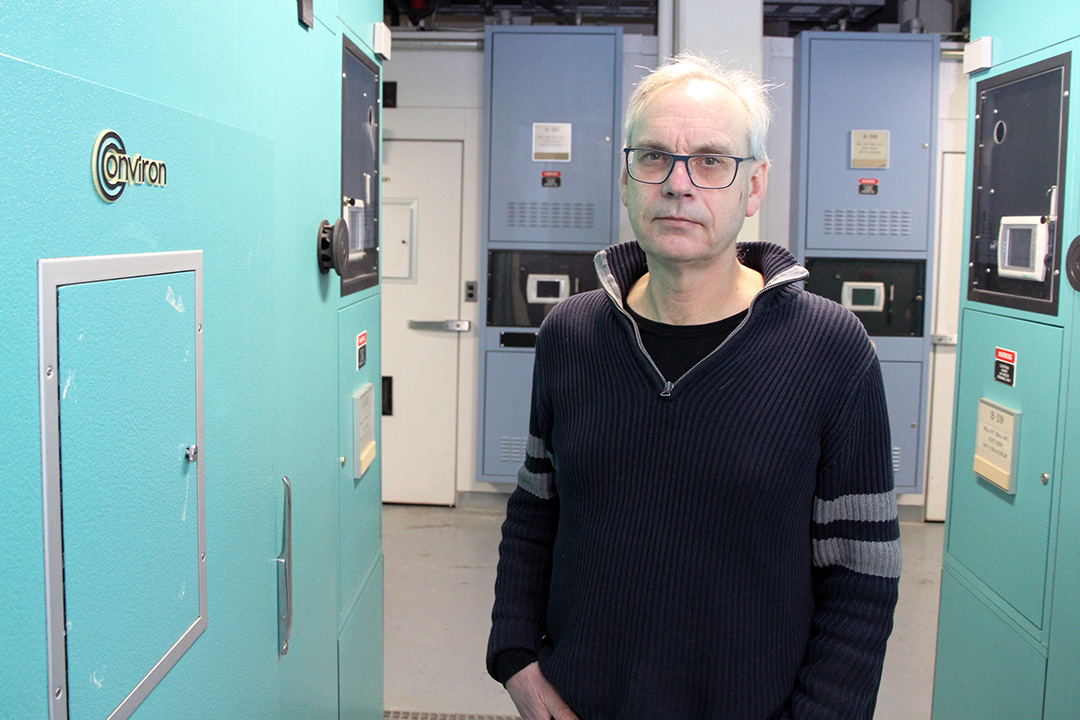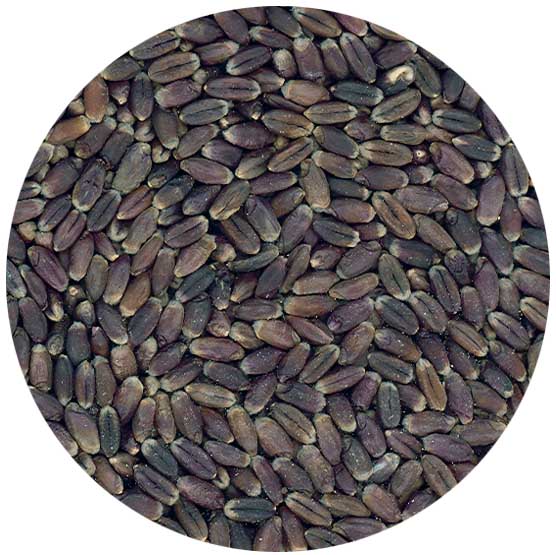
Crop development breeds patience for USask wheat researcher
It’s taken 20 years for this particularly purple wheat to go from grain to glass, but it’s all music to Dr. Pierre Hucl’s (PhD) ears.
By Chris MorinA University of Saskatchewan (USask) College of Agriculture and Bioresources professor with the Crop Development Centre (CDC), Hucl specializes in the breeding of bread wheat and canary seed, work that aims to benefit agriculture across Western Canada. He also works on what he calls “alternative wheats” which are specialized wheat classes. That includes one vividly violet wheat variety that is increasingly finding its way out into the world.
Hucl, who has been at USask for nearly 30 years, first started his work with the purple grain in 1986, a time when wheat varieties in a given market class had to have a specific shape, size and colour. Looking for something that could be used for wheat suited for animal feed or ethanol production, Hucl took notice of a purple wheat variety that had been produced in New Zealand, and obtained his initial parental material from there to start breeding a variety for use in Canada.
That was when he got the bright idea to make the purple even more vibrant.

“Anthocyanins are the pigments that give blueberries their colour. They are also found in this wheat,” said Hucl. “So, I developed some breeding populations and we realized that we could increase the anthocyanins by tenfold to make it more commercially attractive. Suddenly, this became a 20-year research effort. It took me until 2012 to release the first purple wheat developed here at the CDC. I waited 14 years from the first tests that were done in 1998.”
Years later, it’s liquor lovers who are singing the praises of the purple grain. While several Saskatchewan distillers have picked up on using local ingredients in their grogs, Saskatoon’s Stumbletown Distilling was the first to create a vodka made from the purple wheat developed at USask—a spirit that’s since become an award-winning liquor.
The purple wheat is one of many products developed on campus that has found its way into locally-produced alcohol. USask researchers are responsible for breeding malting barleys, which are increasingly being used by local craft brewers. Even the mighty haskap berry, which has similarly been developed for the past two decades by the college's Fruit Breeding Program, is an ingredient that is increasingly turning up in pint glasses across the province.
Despite the recent rise in these grains being used in liquor, Hucl is quick to point out that it’s a long road for any researcher to see the fruits of their labour take off.
“It takes up to three years of official field trials for variety registration purposes,” said Hucl, who earned the 2019 Canadian Seed Trade Association Plant Breeding and Genetics Award in July. “It takes another three years to multiply the seed for commercial release, plus you have to factor in all the early generation testing. When something finally comes out, it may succeed or it may not. Sometimes you don’t know until five or even 10 years down the line whether a variety of wheat was a commercial success or if it’s made any difference to crop production here in Saskatchewan or in Canada.”
Having recently received funding in 2019 from the province’s Agriculture Development Fund to look into the milling quality of purple wheat for use in baking, Hucl emphasizes that even though there is much more work to be done, following through on an idea helps keep him motivated.
“Most ideas are dead ends, as are most research efforts, so I am used to disappointment. But every once in a while, things work out as anticipated,” said Hucl. “Otherwise, it is back to the drawing board and a different approach to answering the question that lead to the idea. In order to be a plant breeder, you have to patient. There is no instant gratification to be had.”
Article originally published on https://news.usask.ca/.

